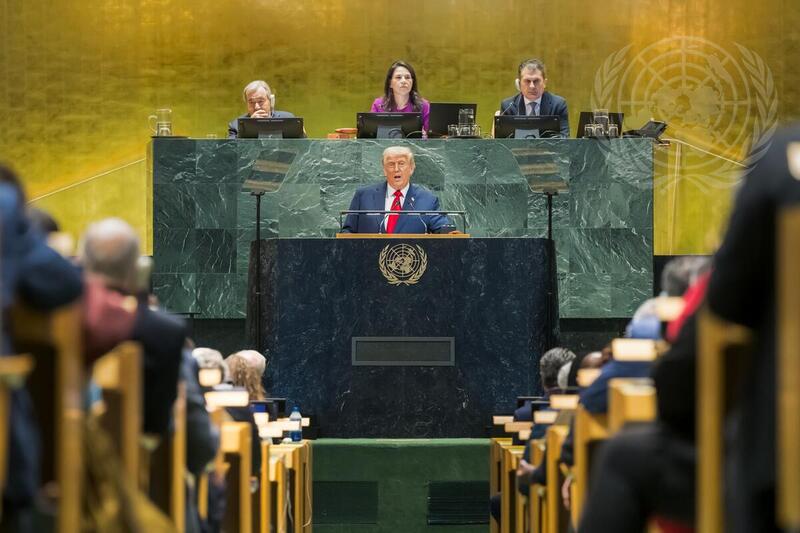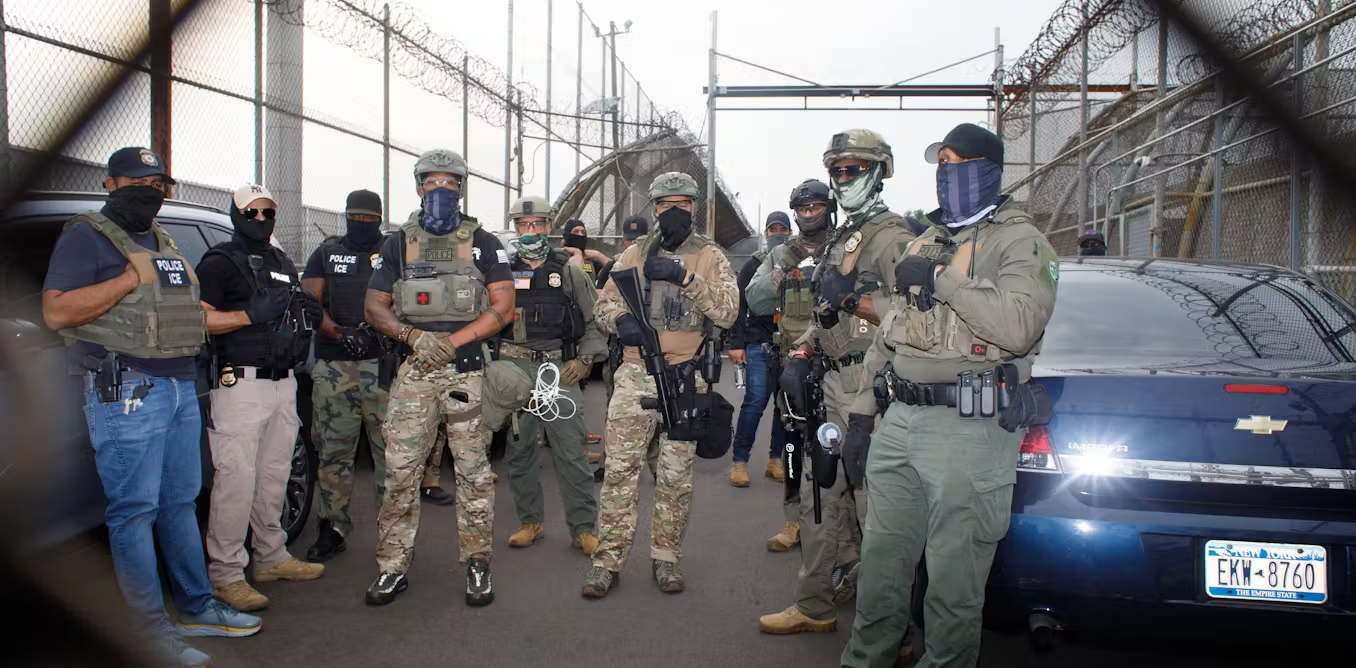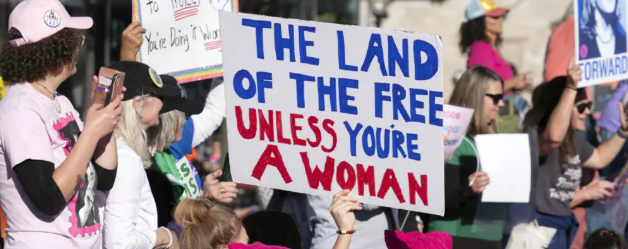p o l i c y b
r i e f
Colombia in Crisis
by Andrew Miller | May 2001
This brief was commissioned and originally distributed
by the IRC’s Foreign Policy
in Focus (FPIF) project. It is reproduced here courtesy of FPIF. Foreign
Policy in Focus—A Think Tank Without Walls—can be accessed online
at http://www.fpif.org
Key Points
Violence and warfare in Colombia are often blamed on the drug trade, but their roots run much deeper and go back well over five decades.
The overwhelming majority of victims are noncombatant civilians. In
the last 10 years, more than 35,000 unarmed civilians have been murdered
or “disappeared.”
Despite rich natural resources, Colombia’s wealth is unevenly distributed,
with large sectors of the population in deep misery.
Colombia, an oil exporter and leading producer of coffee, is rich in
natural and cultural resources. Unfortunately, it is also a country plagued
by violence, is the world leader in the production of cocaine entering
the U.S., and is a major source of heroin. Although violence is often
blamed on Colombia’s large-scale drug trade dating from the mid-1970s,
politically motivated killings and peasant massacres significantly predate
the drug era. The violence has historic roots in the concentration of
resources in the hands of Colombia’s powerful political and economic
elite, desperate conditions among the poor, and a political culture that
has no tolerance for dissent.
Colombia has been ruled for decades by two political parties, Liberal
and Conservative, whose struggles have led to civil wars and regional
conflicts. During the last period of inter-party conflict known as La
Violencia (from 1948 to 1953) some 145,000 people were killed. For years
following, the two parties collaborated in a power sharing arrangement
that excluded other political views. The hegemony enjoyed by these two
parties exacerbated Colombia’s inequitable distribution of wealth.
With the current economic crisis, including a 78% unemployment/underemployment
rate, drug trafficking and political struggle are attractive options.
Today, a fierce counterinsurgency war pits the Colombian state forces
and their paramilitary allies against two major guerrilla forces, the
Revolutionary Armed Forces of Colombia (FARC) and the National Liberation
Army (ELN). The FARC and ELN control significant portions of the countryside.
They remain wary of any negotiated peace process that would disarm the
guerrillas without also disarming the paramilitaries, reining in the armed
forces, and creating conditions for rule of law and economic, social,
and political transformation. In the mid-1980s, after former FARC militants
and other left-wing groups joined the Patriotic Union political party,
more than 2,500 of their members, candidates, and elected officials were
systematically assassinated.
The Colombian military’s drive to reduce the guerrillas’ support
in the countryside has included indiscriminate killings and massacres
of civilians. In the last ten years, more than 35,000 noncombatants have
been murdered or “disappeared,” overwhelmingly by the security
forces and their paramilitary allies. Increasingly, these missions have
been outsourced to paramilitary groups that operate in heavily militarized
areas and coordinate their operations with the army. The proportion of
abuses directly attributable to the armed forces has declined in recent
years, while abuses by their paramilitary allies have escalated dramatically.
These abuses have resulted in massive internal displacement and refugee
flows into Panama, Venezuela, and Ecuador. Guerrilla forces—which
carry out mass abductions, forced recruitment of minors, indiscriminate
attacks, selective killings, and massacres—have also contributed
to internal displacement. More than 1.5 million people have fled their
lands over the past 15 years, with an estimated 300,000 displaced in 2000
alone. Since 1996, another one million, mainly wealthy and educated Colombians,
have gone into exile—nearly half to the United States. In addition
to peasants and others living in areas of guerrilla activity, victims
include perceived or actual government opponents: lawyers, judges, peasant
activists, trade unionists, teachers, and students. Human rights defenders
are under fire, with at least 30 being killed or “disappeared”
in the last four years. For their part, the guerrillas target those suspected
of collaborating with the armed forces or the paramilitaries, and they
fund their insurgency in part by taking hostages for ransom. Guerrilla
and paramilitary groups seized about 1,500 hostages in 2000. Drug traffickers
have also targeted those who oppose their operations. With their wealth,
drug traffickers have become large landowners and have come into direct
conflict with guerrillas and peasants. These drug traffickers have historically
collaborated with the armed forces in creating and financing paramilitary
death squads.
Shortly before taking office in 1998, Colombian President Andres Pastrana
met with Manuel Marulanda, the head of FARC, and initiated the latest
round of peace attempts. As a gesture to FARC, the government removed
its troops from more than 16,000 square miles in south-central Colombia.
Substantive talks between the government and FARC started, following a
brief cease-fire at the end of 1999. Similar efforts are under way with
the ELN but have been met with strong resistance. In 1999, the Pastrana
administration unveiled its multidimensional proposal, “Plan Colombia,”
contingent upon the provision of aid from the U.S. and European countries.
With the conflict intensifying even as peace talks proceeded in 2000,
the Clinton administration and U.S. Congress responded with an aid package
heavily weighted toward security assistance—a focus that has continued
into the Bush administration.
Problems with Current U.S. Policy
Key Problems
U.S. policy presses for control of human rights abuses, yet it bolsters
a military implicated in violations.
U.S. military aid is officially for counternarcotics operations but
in practice it is used for counterinsurgency operations.
The narcoguerrilla thesis was devised as an argument to support aid
to the Colombian army when the U.S. Congress wanted nothing to do with
counterinsurgency.
According to the State Department, “the fight against drugs remains
the principal U.S. national interest in Colombia.” Yet for the Colombian
army, the principal fight is against leftist guerrillas. In recent years,
the misleading but politically expedient term narcoguerrilla has been
coined to merge these two fights. While Secretary of Defense Donald Rumsfeld
has expressed misgivings about using the military to fight drugs, arguing
that illicit drug use is “overwhelmingly a demand problem,”
the Bush administration has asked for additional military appropriations
for counternarcotics operations under the rubric of Plan Colombia.
The current counterdrug program continues the history of U.S. support
for Colombia’s security forces. Since at least the 1960s, Washington
has provided assistance for Colombia’s anti-guerrilla operations,
first in the name of fighting communism and later to fight drugs. Colombian
armed forces have received U.S. training at the Army School of the Americas
and the Special Warfare Center, as well as in-country training by U.S.
military advisers and Special Operations Forces. (see FPIF, Military Training
for Latin America). In addition, the U.S. has supplied Colombia’s
security forces with arms, munitions, helicopters, and other equipment.
Since 1989, when the cold war ended and then-President George Bush declared
drug trafficking to be a national security threat, Colombia has been the
number one recipient of U.S. military aid in the Americas. In 1994 and
1995, Congress began to direct the bulk of U.S. aid to the Colombian National
Police’s Directorate of Anti-Narcotics Operations (DANTI), in part
due to the Colombian military’s abysmal human rights record. Although
there have been no documented reports of recent human rights abuses by
DANTI operatives, the human rights community has cautioned that it is
too early to give DANTI a clean bill of health.
A marked deterioration of Colombia’s armed conflict has gone hand
in hand with increased U.S. military aid. In 1996, Congress passed the
Leahy Law prohibiting many forms of U.S. aid from going to security force
units (both military and police) implicated in human rights violations.
This law passed after government documents obtained by human rights groups
proved that the U.S. had given aid to Colombian army units implicated
in rights violations. Although the Leahy Law blocked some aid, ironically
it was also used in 1998 to justify the release of military aid frozen
since 1994 because the administration concluded that there were no credible
reports linking recipient Colombian army units to violations.
To help address congressional and public concerns that U.S. aid is supporting
counterinsurgency operations, the Colombian military created a special
counternarcotics brigade which is being trained by U.S. special forces.
The brigade will eventually consist of three battalions, each with 600
to 950 soldiers.
Despite such attempts to erect a firewall between antidrug and anti-guerrilla
operations, some officials in Washington and Colombia have, since the
1980s, promoted the concept of the narcoguerrilla. While it is increasingly
true in recent years some FARC and ELN forces have profited from drug
trafficking, the simplistic narcoguerrilla notion obscures the separate
identities and goals of drug traffickers and guerrillas—as well as
the reality that parts of Colombia’s armed forces, paramilitaries,
and political elite are also tied to the drug cartels.
Drug traffickers and guerrillas often operate in the same regions and
have some converging interests. Many guerrilla units tax and help protect
drug cultivation, just as they do other businesses in areas under their
control. Drug traffickers are equal-opportunity corrupters: they try to
work with anyone who will to advance their interests. Some paramilitary
leaders, including the Castaño brothers, have also been identified
as narcotraffickers. Amnesty International USA filed suit against the
CIA in mid-2000 in an effort to obtain information about suspected ties
between the U.S. government and the Castaño family, which has been
involved in paramilitary violence and narcotics trafficking. Former President
Samper allegedly received $6 million from narcotraffickers for his presidential
campaign. In January 2000, the wife of Colonel Hiett, the U.S. military
group commander in Bogotá, pleaded guilty to heroin trafficking.
Officials in Washington describe increased U.S. support for Plan Colombia
as embracing the peace process and the development option while pursuing
the counternarcotics imperative. However, U.S. assistance is overwhelmingly
military, and is likely to undermine peace efforts by reassuring hard-line
elements in Colombia that they can defeat the guerrillas. In July 2000,
President Clinton signed a $1.3 billion emergency counterdrug package,
earmarking roughly $860 million in aid for Colombia. This special package,
together with already appropriated funds, meant the Clinton administration
authorized an extraordinary $1.2 billion in counternarcotics aid to Colombia
during 2000 and 2001. Roughly 80% of this aid was designated for military
equipment and training.
In April 2001, the Bush administration proposed an additional $800 million
in counternarcotics assistance for the Andean region. This request includes
$399 million for Colombia through the International Narcotics and Law
Enforcement (INL) program, of which $252.5 million is proposed for interdiction
and $146.5 million for alternative development and institution building.
This does not include additional funding from the Pentagon and other agencies.
In the past several years, the Pentagon has supplied roughly $150 million
annually in direct military aid to Colombia, above and beyond the INL
monies.
Meanwhile, the human rights situation continues to deteriorate, with
some Colombian analysts describing the situation as genocide. In January
2001 alone, 27 massacres were carried out by army-backed paramilitaries,
resulting in several hundred deaths. At this rate, 2001 will be the bloodiest
year for Colombia in recent history.
Toward a New Foreign Policy
Key Recommendations
The U.S. should fully support Colombia’s peace process and evaluate
any proposal in terms of its effect on the process, discarding proposals
that will jeopardize peace.
End-use monitoring of security assistance and human rights vetting
and monitoring need to be fully staffed and financially supported.
Washington should eliminate any policy proposals that contradict human
rights protection or could negatively impact the local population.
In April 2001, over 100 Latin Americans—former heads of state, cabinet
ministers, legislators, prominent authors, intellectuals, and civic leaders—called
on President Bush to go back to the drawing board with his military-oriented
support for Plan Colombia. In a letter, they charged that the U.S.-backed
antidrug campaign is fueling a bloody war, poisoning food crops and the
environment, and forcing tens of thousands of poor farmers off their land.
President Bush would do well to heed their advice, incorporating the following
principles.
Support the peace process
Although no one is arguing that the peace process is proceeding smoothly,
most observers in Colombia agree that it must move forward and deserves
strong support. To escalate U.S. military involvement even as the parties
engage in negotiations is a contradiction. Washington should increase
political support for the process and ensure that adequate financial resources
are available.
Continue implementation of the Leahy Law
U.S. security assistance should continue to be closely scrutinized to
ensure that no units of the Colombian security forces—armed forces,
intelligence units, and police forces—implicated in violations receive
any U.S. aid. Washington should assist Colombian efforts to prosecute
those responsible for violations. Appropriate resources should be made
available to ensure the best human rights vetting and end-use monitoring
possible. Furthermore, Washington should publicly disclose the security
force units slated to receive U.S. aid (including units being considered)
to ensure full public discussion.
Vigorously pressure for concrete action against paramilitary groups
Washington should press for effective steps to dismantle paramilitary
groups, such as: suspending any active-duty officer charged by the Colombian
Attorney General’s office with paramilitary collaboration or human
rights violations; executing the Attorney General’s detention orders
of paramilitary members; prosecuting in civilian courts any officers charged
with paramilitary involvement or human rights violations; and fully implementing
the often-announced but still undeployed (since 1989) Bloque de Búsqueda,
designed to find and detain paramilitary members.
Promote and support the rule of law
Even if the conflict in Colombia were to end overnight, human rights
problems would not disappear. Human rights abuses are not all linked to
the war. The so-called social cleansing killings, for instance, are targeting
street children, among others. Resources should be made available to strengthen
the Colombian judiciary and to protect its members from attack. Any intelligence
personnel implicated in violations should be turned over to Colombian
civilian authorities for prosecution.
Support civil society
Human rights advocates and other sectors of civil society striving to
support the peace process, human rights, and the rule of law need to be
defended. U.S. assistance should support Colombian government efforts
to protect civil society groups at risk of attack. Specifically, Washington
should ask for periodic and public progress reports on the implementation
of the Colombian government’s commitment to investigate attacks against
human rights advocates, to install security infrastructure for groups
at risk, and to prosecute those implicated in such attacks.
Eliminate proposals contradictory to human rights
Washington’s acknowledgement that its support for Plan Colombia
with its “push into southern Colombia” will create more displaced
populations is a clear sign that the U.S. aid package has a fatal flaw.
All programs should be evaluated in light of their impact on the local
population. Those proposals deemed harmful should be discarded. Clear,
periodic, detailed, and public reporting requirements should be added,
and more resources made available for end-use monitoring and human rights
compliance.
Reevaluate counternarcotics strategies for Colombia and other source
countries
As long as cocaine commands high prices on the world market and factors
like undeveloped infrastructure limit alternative economic opportunities,
peasants are going to grow coca and are going to participate in the lucrative
drug trade. The U.S. government should work closely with the Colombian
government and local authorities to ensure that alternative development
programs and infrastructure investment reach and serve the local communities.
Aerial spraying in Colombia needs to cease and a public evaluation commence
as to its environmental, economic, and human impacts. In addition, Washington
needs to open a broad, public, and rational discussion—devoid of
finger pointing and political labeling—to evaluate the merits of
other forms of dealing with the drug problem. This discussion should fully
explore expanding demand-side programs, including public education and
treatment in the United States.
Andrew Miller < amiller@aiusa.org >is
acting Advocacy Director for the Americas at Amnesty International USA
(AIUSA). In 1999-2000, he served as a human rights observer in the northwestern
Colombian region of Urabá with Peace Brigades International (PBI).
The views expressed here are not necessarily those of AIUSA or PBI.
Sources for More Information
Organizations
Amnesty International USA
Colombia Coordinator
c/o AIUSA Washington Office
600 Pennsylvania Ave. SE, 5th Fl.
Washington, DC 20003
Voice: (510) 986-0885
Email: ppaz@amnesty-usa.org
Website: http://www.amnestyusa.org/countries/colombia/
Contact: Paul Paz y Miño
Center for International Policy
1755 Massachusetts Ave. NW, Suite 312
Washington, DC 20036
Voice: (202) 232-3317
Fax: (202) 232-3440
Email: isacson@ciponline.org
Website: http://www.ciponline.org/colombia/
Contact: Adam Isacson
Colombia Desk
Western Hemisphere Affairs Bureau
Department of State
2201 C St. NW
Washington, DC 20520
Voice: (202) 647-3360
Fax: (202) 647-2628
Colombia Program
The Bureau for International Narcotics and Law Enforcement Affairs
Department of State
2201 C St. NW, Room 7334
Washington, DC 20520
Voice: (202) 647-8727
Fax: (202) 647-8269
Website: http://www.state.gov/www/global/narcotics_law/fs_colombia.html
Human Rights Watch
1630 Connecticut Ave. NW, Suite 500
Washington, DC 20009
Voice: (202) 612-4321
Fax: (202) 612-4333
Email: hrwdc@hrw.org
Website: http://www.hrw.org/
U.S./Colombia Coordinating Office
1630 Connecticut Ave. NW, Suite 200
Washington, DC 20009
Voice: (202) 232-8090
Fax: (202) 232-8092
Email: agiffen@igc.org
Website: http://www.igc.org/colhrnet/
Washington Office on Latin America
1630 Connecticut Ave. NW, 2nd Floor
Washington, DC 20009
Voice: (202) 797-2171
Fax: (202) 797-2172
Email: wola@wola.org
Website: http://www.wola.org/
This brief is a product of the Interhemispheric Resource
Center’s Global Affairs
and Americas Programs .
All rights reserved.
Recommended citation: "Colombia in Crisis,"
Foreign Policy In Focus Policy Brief, vol. 6, iss. 20 (Interhemispheric
Resource Center/Institute for Policy Studies, May 2001).
Web location: http://www.americaspolicy.org/briefs/2001/v6n20colombia.html



